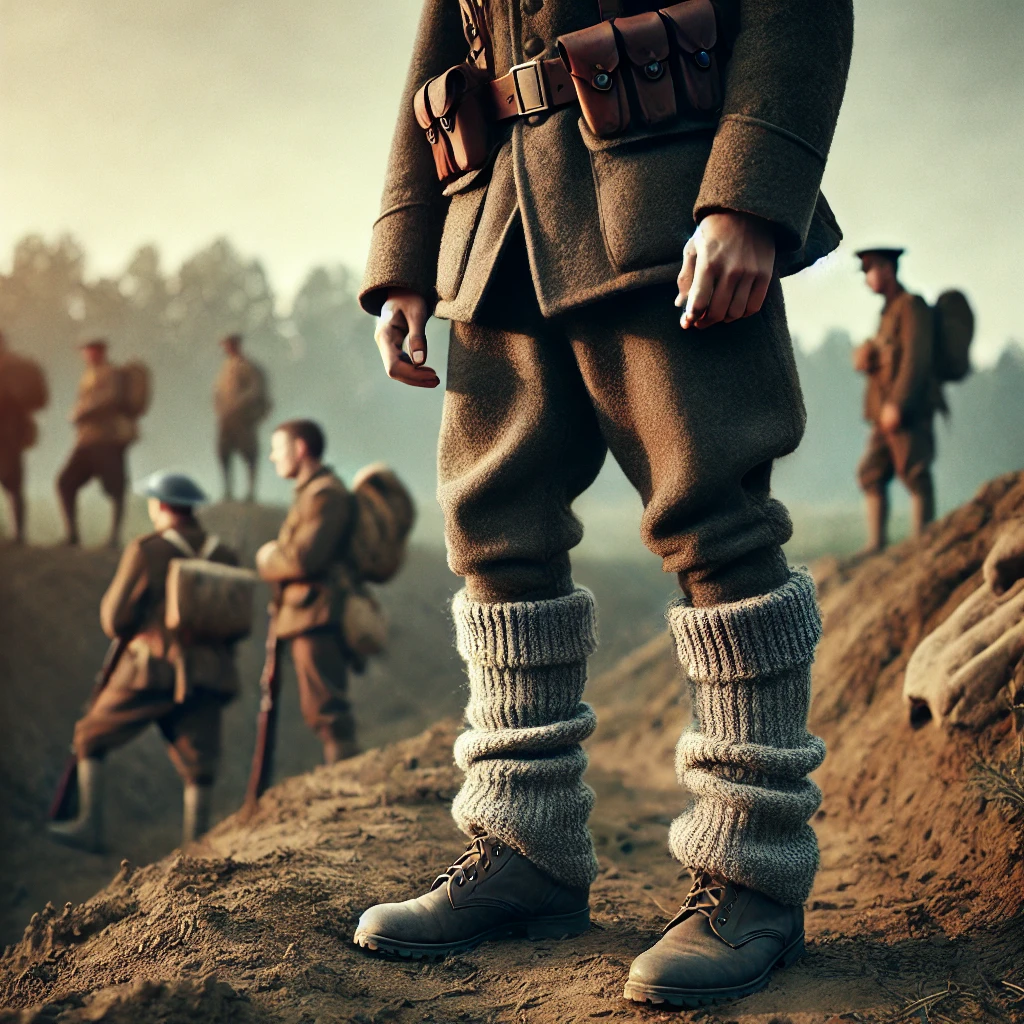
Military Puttees: The Essential Leg Protection in Military Uniforms
Published on Mar 04, 2025
Military Puttees: The Essential Leg Protection in Military Uniforms
Introduction
Military puttees, a staple of early 20th-century military uniforms, remain a fascinating aspect of military history and a practical piece of legwear. These long strips of cloth were wrapped around the lower legs to provide protection and support. Initially designed for soldiers, puttees became popular among hikers and outdoor enthusiasts as a practical alternative to modern hiking gaiters. If you are looking for authentic military puttees, an army surplus store near you can be the best place to start.
This article will explore military puttees' history, benefits, and uses and where you can find them today.
What Are Military Puttees?
Military puttees are long fabric strips, usually made from wool or canvas, wrapped tightly around the lower legs, from the ankle to just below the knee. They were primarily used to support soldiers' legs, prevent dirt and debris from entering boots, and offer protection against minor injuries.
These traditional leg coverings were widely used during World War I and World War II, and even though modern military boots have replaced them in most armed forces, they are still valued by military reenactors, collectors, and outdoor enthusiasts.
The History of Military Puttees
Military puttees have a deep-rooted history, especially in European and British military attire. Their origin can be traced back to the late 19th century when they were adapted from traditional leg bindings in India. The British Army adopted puttees as part of their standard uniform to support and stabilize soldiers' legs during long marches.
During World War I, soldiers from various nations, including British, French, and American troops, wore puttees as a part of their standard military uniforms. The thick fabric helped insulate the lower legs from cold weather and kept debris out of boots, making them essential gear in trench warfare. Even though modern combat boots have replaced them, many military enthusiasts still appreciate their historical significance.
Why Were Puttees Replaced?
While puttees provided many benefits, they also had drawbacks. It was time-consuming to wrap properly and could become loose during extended wear. With advancements in military footwear, puttees were gradually replaced by high-laced leather boots and modern combat boots, which provided superior protection and required less maintenance.
Despite being phased out in the military, puttees are used in various contexts, including hiking and outdoor activities, due to their lightweight and protective features.
How Military Puttees Compare to Hiking Gaiters
For those hiking or trekking, puttees function like modern hiking gaiters. Both are designed to protect the lower legs from dirt, debris, and moisture. However, while hiking gaiters are usually made from synthetic waterproof materials and feature zippers or Velcro closures, puttees are made of breathable wool or canvas and require manual wrapping.
Hikers who prefer traditional gear often opt for military puttees because of their durability, warmth, and historical charm. For military reenactments or practical outdoor use, puttees remain a popular choice.
Where to Buy Military Puttees
If you're looking for authentic military puttees, your best option is an army surplus store near you. Army surplus stores stock genuine military gear, including puttees, helmets, boots, and more. These stores often carry a variety of sizes and materials, allowing you to find the perfect pair for your needs.
Alternatively, check online military gear retailers for reproduction puttees that resemble original military designs. Some Army Navy stores near you may also carry a selection of puttees and other military collectibles.
How to Wear and Maintain Military Puttees
If you've never worn puttees before, here's a simple guide:
- Please start at the ankle: Wrap the puttee around your ankle, ensuring it's snug but tight.
- Work your way up: Gradually wrap it upwards, overlapping each layer slightly.
- Secure the end: Once you reach just below the knee, tuck in the end securely or use a strap if provided.
- Adjust as needed: Ensure it's comfortable and does not restrict circulation.
To maintain puttees, wash them gently with mild detergent and avoid excessive wringing to prevent damage to the fabric.
Conclusion
Military puttees may no longer be standard in modern armies. Still, their historical significance and practical uses make them a valuable addition to any military uniform collection or outdoor gear setup. Whether you're a history enthusiast, a reenactor, or a hiker looking for traditional leg protection, puttees offer a durable and stylish solution.
For those interested in acquiring genuine military puttees, check out an army surplus store near you or explore online retailers specializing in military uniforms. These stores often carry a variety of military gear, including army uniforms with helmets, making them a great resource for historical and practical military equipment.
If you're a fan of historical military gear or looking for a durable alternative to modern hiking gaiters, military puttees are a timeless choice.
